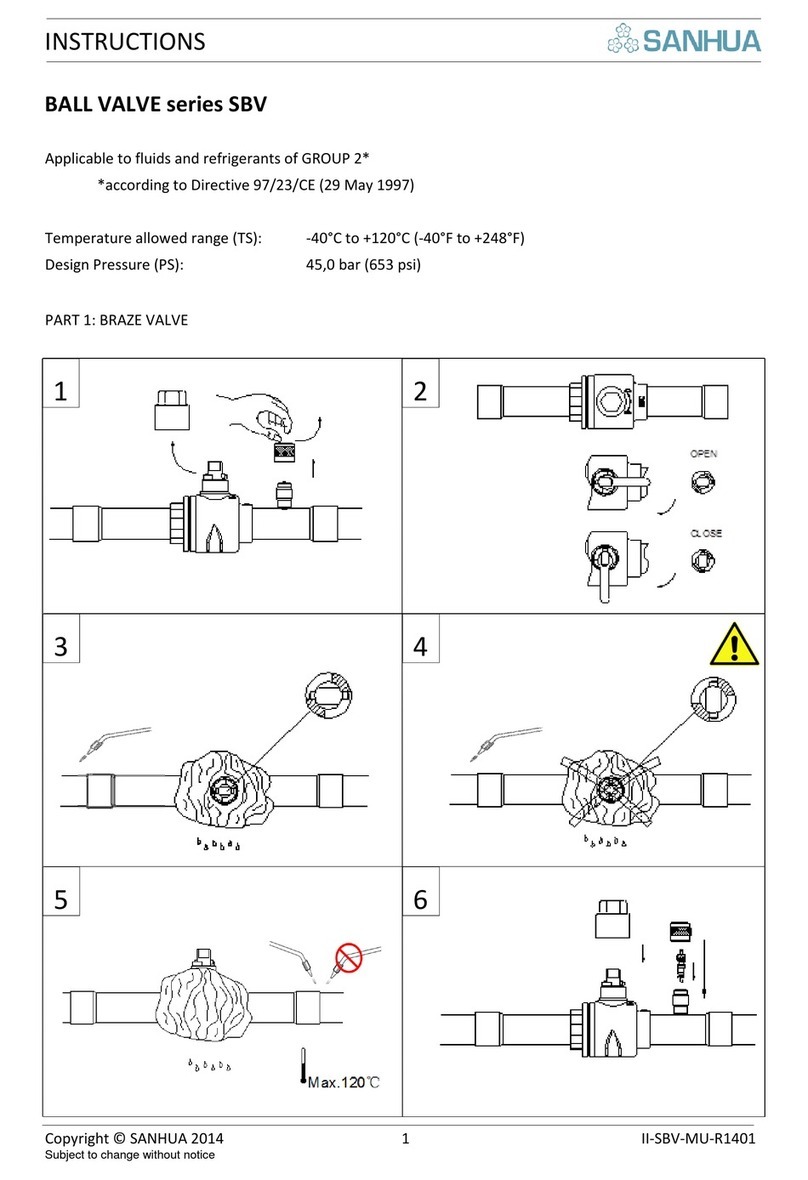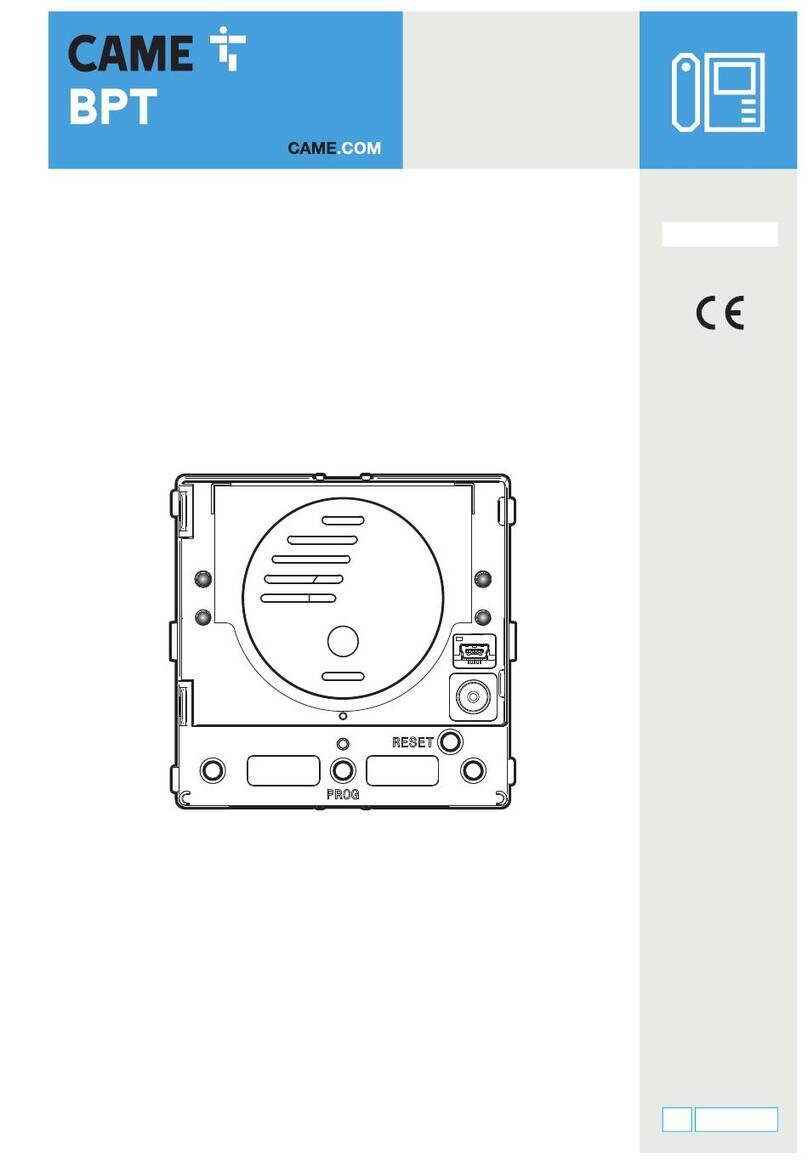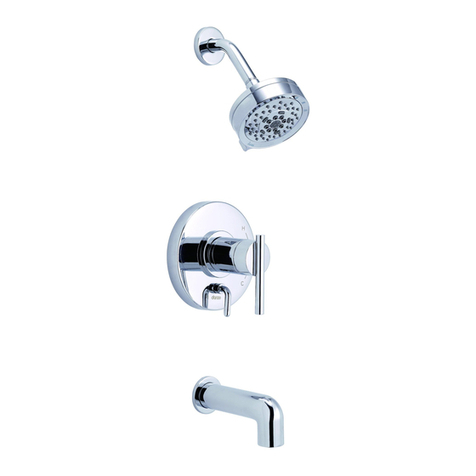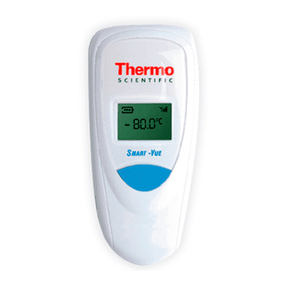Apeks AP5920 User manual

Issue 05
07/02/2019
AP5920
DRY-SUIT VALVE
OPERATION, CARE
AND USER MANUAL

Tel: +44 (0)1254 692200
Fax: +44 (0)1254 692211
Website: apeksdiving.com
Apeks Marine Equipment Ltd
Neptune Way
Blackburn
Lancs
BB1 2BT
England
Part Number: AP5920
Issue Number: 05

1
Valve Positioning ............................................................. 2
Valve Fitting Procedure.................................................... 3
Inflation Valve Connections ........................................... 4
Hose Connections ............................................................ 4
Suit Valve Operation......................................................... 4
Care and Maintenance..................................................... 5
Suit Valve Range ............................................................... 6
P-Valve, Positioning, Fitting and Operation ................. 7
Guarantee .......................................................................... 8
CONTENTS

2
DRY-SUIT VALVE OPERATION, CARE AND MAINTENANCE MANUAL
VALVE POSITIONING
Auto Dump Valve
It is recommended that the auto dump valve is tted high up on the left or right
arm. With the forearm raised to a horizontal position across the chest, the
dump valve should be directly on top of the upper arm where it can operated
easily by the opposite hand.
Cuff Dump Valve
As the name suggests, the cuff dump valves are tted near the cuff of the
suit. Ensure the valve will not be covered by gloves when tted.
Suit Inflation Valve
It is not critical to the operation of the valve where it is tted on the suit as
it is with the dump valve, but generally the ination valve is tted on the
chest area where it can easily be reached. When positioning the valve try to
ensure that it won’t be covered by other pieces of diving equipment, affecting
access to the valve.
Rubber Backing Patch
It is highly recommended that a rubber backing patch (Apeks part# AP0166)
is bonded to the outside of the suit with a suitable adhesive, where both
ination and dump valves are to be positioned. If the hole for the valve has not
been cut previously then carefully cut out the suit in the centre of the rubber
backing patch. If a backing patch is not tted, this could result in a leak.
RG91112 8
AT43 AT105
RG912220

3
VALVE FITTING PROCEDURE
Low Profile Auto Dump Valve Fitting
When the rubber backing patch has been bonded to the suit and the hole
cut out, the valve is ready to be tted. Place the thread of the valve through
the hole in the suit, ensuring the retaining ring of the dump valve is located
correctly around the cap (Fig. 1).
VERY IMPORTANT: Before any torque is applied to the locking nut or
dump valve it is critical that the adjusting cap of the dump valve is
pressed down to lock the valve mechanism. (Fig 2) Failure to press the
cap during tightening or loosening of the valve, could cause damage
to the mechanism.
The valve should be tightened into the suit to approx. 4 lbs/ft (5.4 Nm)
using AT43 tool or as tight as possible by hand. Apply the torque to
the backing nut and you will find the dump valve will tend not to rotate
due to the friction on the rubber backing patch.
After a few days or before you dive re-check the tightness of the
backing nut.
WARNING: Periodically check all the valves to ensure they are still
tight in the suit.
Figure 1
Retaining
ring
Rubber
Backing
Patch
Locking
Nut
Figure 2
IMPORTANT:
PRESS
DOWN THE
CAP
WHILE
TIGHTENING
THE
LOCKING
NUT
Screw the locking ring onto the dump valve until the valve is tightly held in the suit.
Fitting all other suit valves
Including: standard dump valve, cuff dump valve (AT43 tool can be used) and
all ination valves.
All other suit valves are tted in the same way as the low prole dump valves
shown previously, but without the need to press down on the front of the valve.
You will nd with the swivel ination valve, that it rotates through approximately
350 degrees and then stops, this stop is to enable the valve to be tightened into
the suit. When the valve is tight in the suit, you should ensure that the stop is not
in the area you wish the valve to swivel.

4
DRY-SUIT VALVE OPERATION, CARE AND MAINTENANCE MANUAL
INFLATION VALVE CONNECTIONS
There are two types of ination
valve connections used.
Fig. 3 shows the Apeks tting
and Fig. 4 shows the Seatec
tting. The Seatec tting is the
same tting foundon buoyancy
device direct feeds and tends
to be more widely used.
HOSE CONNECTIONS
There are two types of hose
coupling to go with the ination
valve connections. Again these
are Apeks couplings (Fig 5) and
Seatec couplings (Fig 6).
The difference in tting is, the
Apeks coupling will just push
straight ontothe ination valve connection, but theSeatec coupling needs tohave
the collar on the coupling pulled back while pushing it onto the valve connection.
The hoses come with a standard 3/8” UNF male thread so they can be tted
to the medium pressure port of any 1st stage regulator.
When tting the hose to the regulator, ensure the O-ring is lightly lubricated
and tighten the hose using a 9/16” A/F spanner.
Longer hoses are available to special order from your local Apeks dealer.
Figure 3 Figure 4
SUIT VALVE OPERATION
Inflation and Auto Dump Valves
Including: standard dump valve and low prole dump valve.
Before each dive, it is advisable to check the tightness of the suit valves in the suit
to ensure leak free diving.
1. Do not dive over-weighted. Choose a safe shallow place to test your buoyancy.
2. Always enter the water with the dump valve approximately half closed, in
the event of an emergency, you may need immediate positive buoyancy.
3. Once in the water, on the surface, blow sufficient air into your suit, by depressing
the button on the suit ination valve, to provide strong positive buoyancy.
4. Fully deflate your buoyancy jacket. If you cannot maintain positive buoyancy
with the dump valve approximately half closed, you are probably over weighted.
Figure 5 Figure 6
Pull collar
back while
fitting to
valve

5
5. To submerge, firmly press the adjustable cap of the dump valve to operate
the manual dump system. If you cannot submerge easily after venting all the air
from the suit, you are under weighted.
6. Settle yourself comfortably on the bottom, in an upright position. Wind open
the dump valve cap completely, blow air into your suit until it vents from the dump
valve, close the dump valve cap one or two clicks at a time and press the inator
again. Repeat until sufcient buoyancy can be achieved to maintain a controlled
rate of ascent without any assistance. As you ascend, expanding air within the suit
will be automatically vented. You may stop or slow down your ascent at any time
by operating the manual push dump system. You should practice this procedure
several times in progressively deeper water until you are thoroughly familiar with
the valves’ capabilities.
Cuff Dump Valves
When using cuff dump valves, venting of the air is done simply by raising
the arm and allowing the air to rise venting through the cuff dump valve. This
type of valve is simpler than the auto dump valve, but does not offer the same
control of buoyancy.
CARE AND MAINTENANCE
Suit Inflation Valves
The suit ination valve should be rinsed in fresh water after use, it should then
be connected to the air supply and blown through to clear any residual water.
The valve should be stripped down, cleaned and the O-rings changed annually
to guarantee trouble free operation.
All Dump Valves
The dump valve should be rinsed in fresh water after use and then the residual
water gently shaken off.
Check the operation of the valve before each dive.
VERY IMPORTANT: When removing the low profile auto dump valve
ensure the adjusting cap is depressed while loosening as described
on page 5. Failure to depress the cap could cause damage to the
valve mechanism.
VERY IMPORTANT: Any work carried out on the suit valves should
always be done by a competent service technician.

6
DRY-SUIT VALVE OPERATION, CARE AND MAINTENANCE MANUAL
APEKS DRY SUIT VALVE RANGE
Swivel suit inflation valve
TL115123—Apeks fitting
TL115139—Seatec fitting
Seatec fitting Low Profile
Auto Dump Valve
TL113128
Cuff Dump Valve
TL112112
Auto Dump Valve
TL111115
P-Valve
TL116001

7
CAUTION: Take care to prevent slipping and damaging the suit.
P-VALVE
Valve positioning
As with the suit ination valve, the siting of the P valve is not critical. The most
common area for positioning is the inner thigh. Ensure that you can reach the
valve easily to rotate the valve cap and open the valve.
Valve fitting
If the hose of the P-valve is too long, it can be trimmed to suit a preferred
location. To t the P-valve, a 26mm diameter hole must be cut into the dry suit.
The rubber backing patch is aligned with the newly cut hole and glued to the
outside of the dry suit, using suitable contact adhesive. Allow to dry.
Remove the grub screw from valve cap using 1.25mm Allen key.
Unscrew valve cap and nut from valve body.
From the inside of the suit insert valve body through hole and screw on nut.
Tighten using multi tool AT105 (5 Nm max).
Screw valve cap fully down onto the valve body.
Insert grub screw into the valve body and fully screwing using 1.25mm Allen
key, then unscrew grub screw 2 full turns.
The valve cap should rotate approx. 120 degrees between closed and fully open.
P-Valve operation
To open the valve, rotate the cap anti-clockwise until it stops. In this position the
valve can be used throughout the dive without the need for further adjustment,
as it uses a non return valve system. For extra security the valve can be closed
when not being used. To close the valve, rotate the cap clockwise, excessive
force is not required.
CAUTION: Ensure that the hole is sufficiently clear from any seals/seams.
CAUTION: Position the valve so that the hose and connection will point
in the desired direction.
WARNING: It is recommended that all APEKS suit valves are installed
by an experienced drysuit technician.

8
DRY-SUIT VALVE OPERATION, CARE AND MAINTENANCE MANUAL
Cleaning and maintenance
The P-Valve must be rinsed and ushed through with clean fresh water after
every dive. This is important to maintain trouble free use and due to bacterial
growth and the potential health implications.
GUARANTEE
As with all Apeks valves, our range of dry-suit valves come with a lifetime
guarantee to the original owner, against defects in materials and workmanship.
This guarantee does not cover damage due to abuse, neglect, improper usage,
lack of maintenance or normal wear and tear.
If after inspection by Apeks, we are satised that the product is defective, the
product will be repaired or replaced free of charge.
SERVICING
It is recommended that all Apeks suit valves are inspected on a yearly basis.
Every two years your valves should be serviced by your local Apeks dealer
or suit manufacturer.
CAUTION: Diving is a potentially hazardous sport. Before using any
diving equipment you should be properly trained in the use of the
equipment by a recognised club or organisation.
All Apeks diving equipment is designed and manufactured in England and is
guaranteed and backed by a rst class after sales service. When your equipment
requires any service or should need repair, you should rst contact your local
Apeks dealer or the suit manufacturer. If dealer service is not available, you
can contact our customer service department directly.
Thank you for purchasing Apeks Dry-suit valves.


DRY-SUIT VALVE
OPERATION, CARE
AND USER MANUAL
Apeks Marine Equipment Ltd
Neptune Way, Blackburn, Lancashire,
England, United Kingdom, BB1 2BT
Tel: 00 44 (0)1254 692200
apeksdiving.com
Table of contents
Popular Control Unit manuals by other brands

SKUTCH
SKUTCH CK-1P9 manual
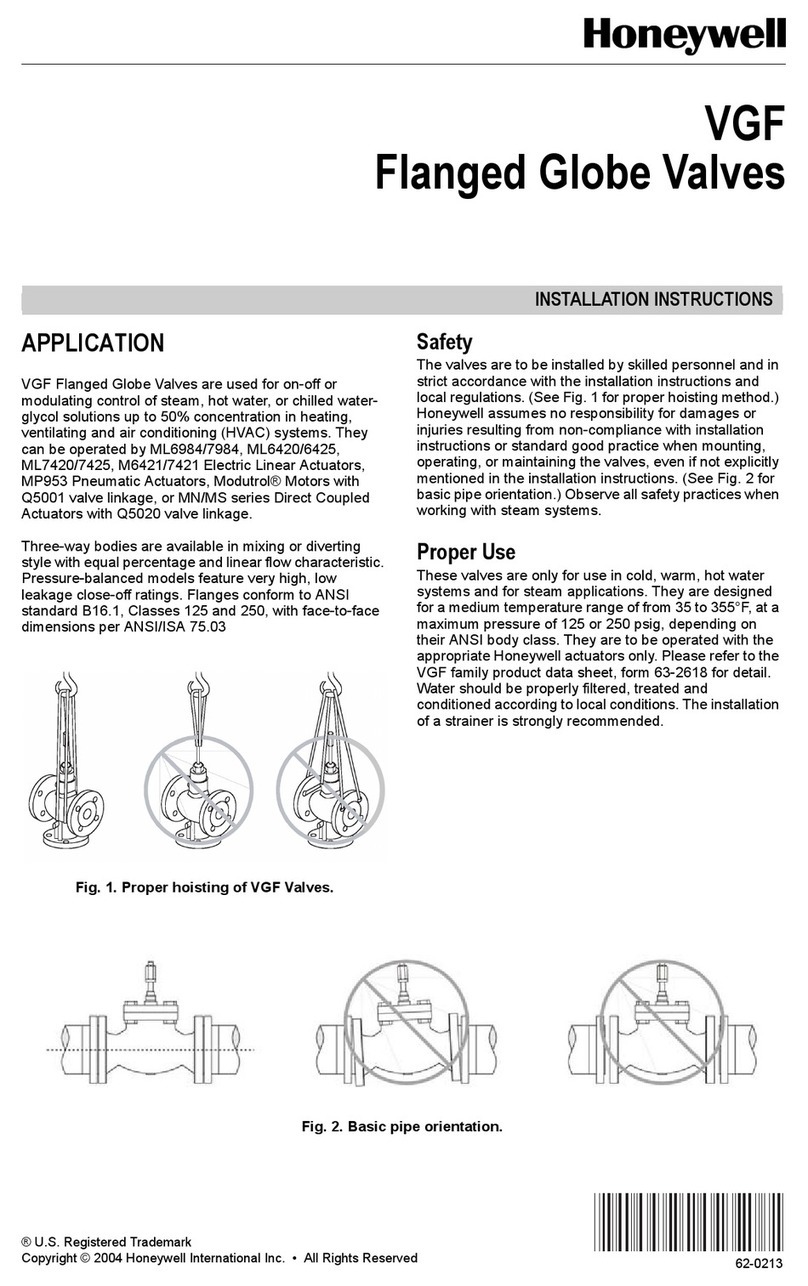
Honeywell
Honeywell VGF installation instructions
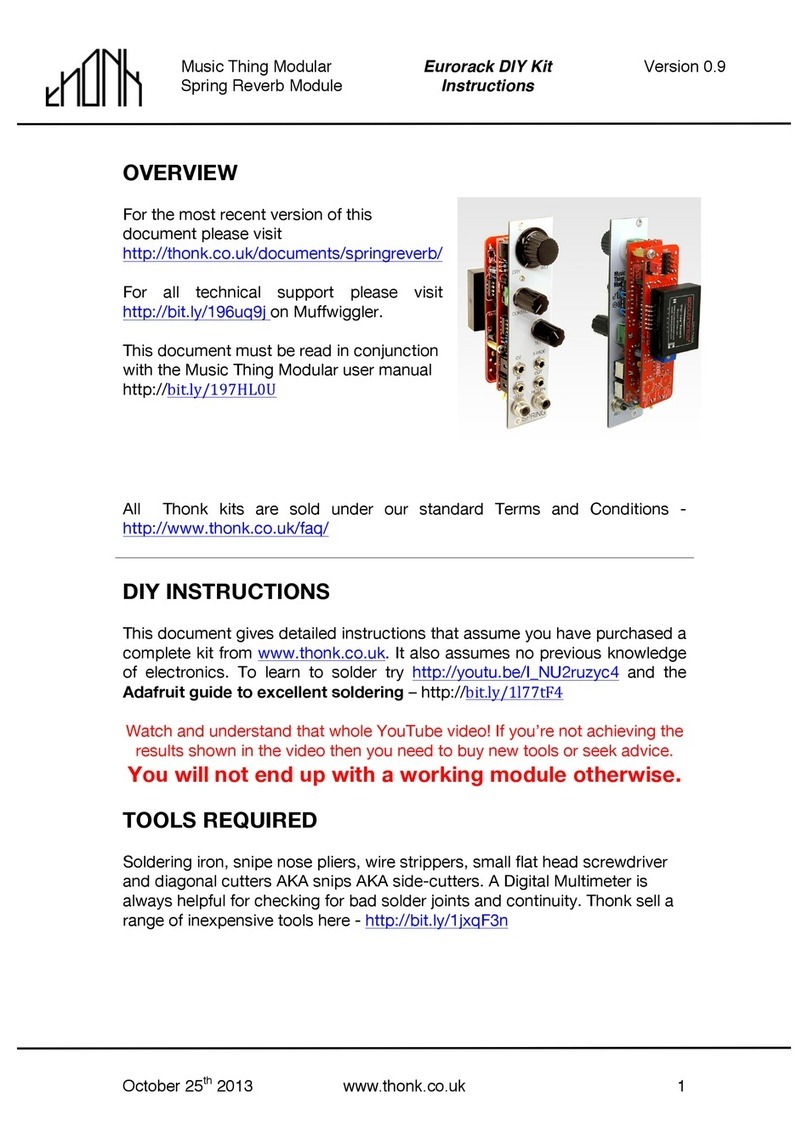
Thonk
Thonk Spring Reverb instructions
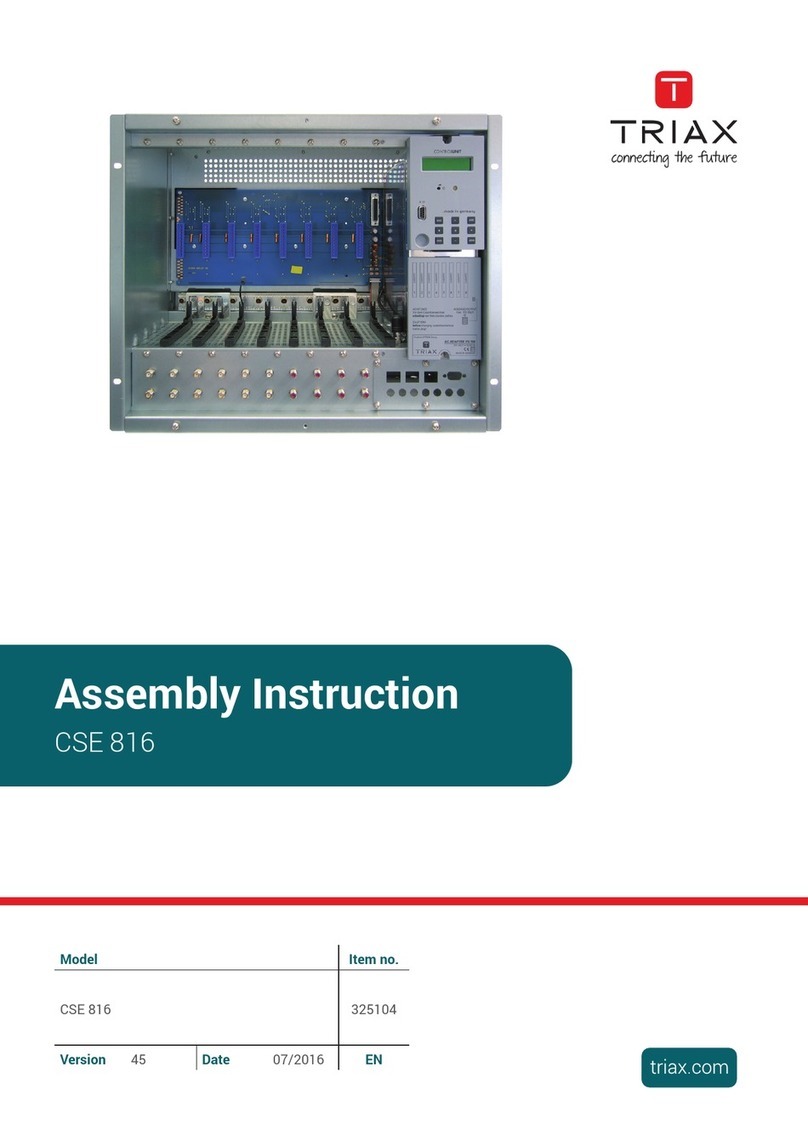
Triax
Triax CSE 816 Assembly instruction
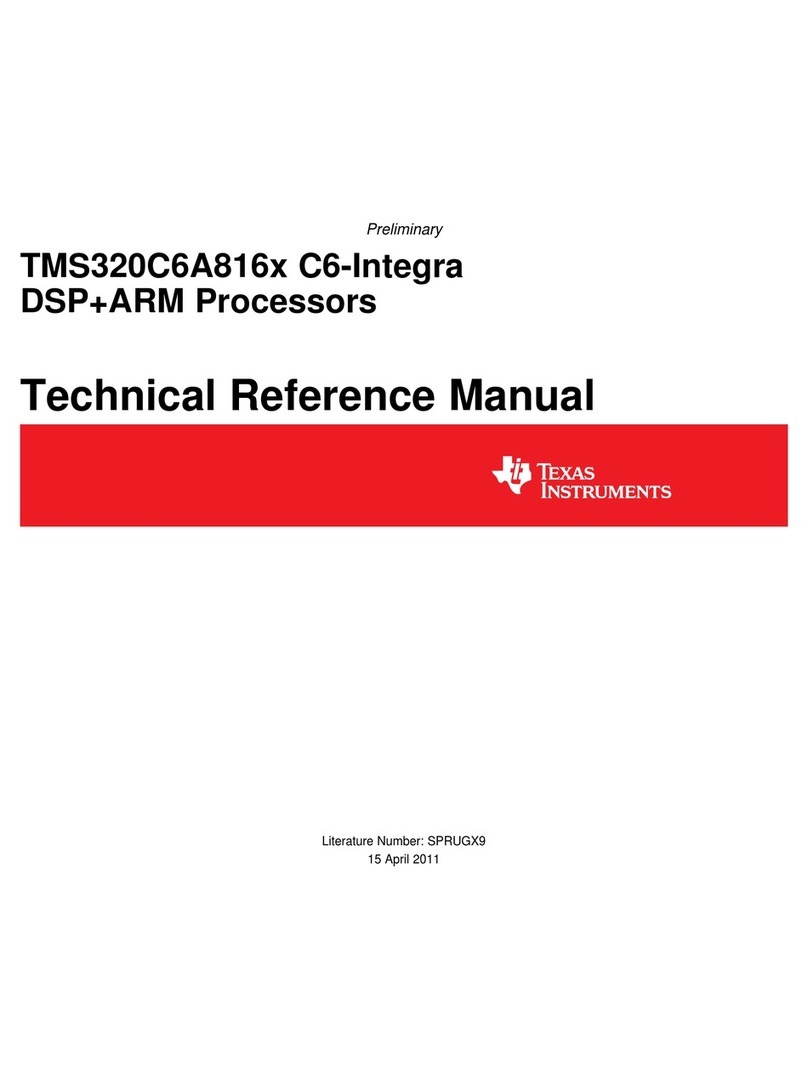
Texas Instruments
Texas Instruments TMS320C6A816 Series Technical reference manual
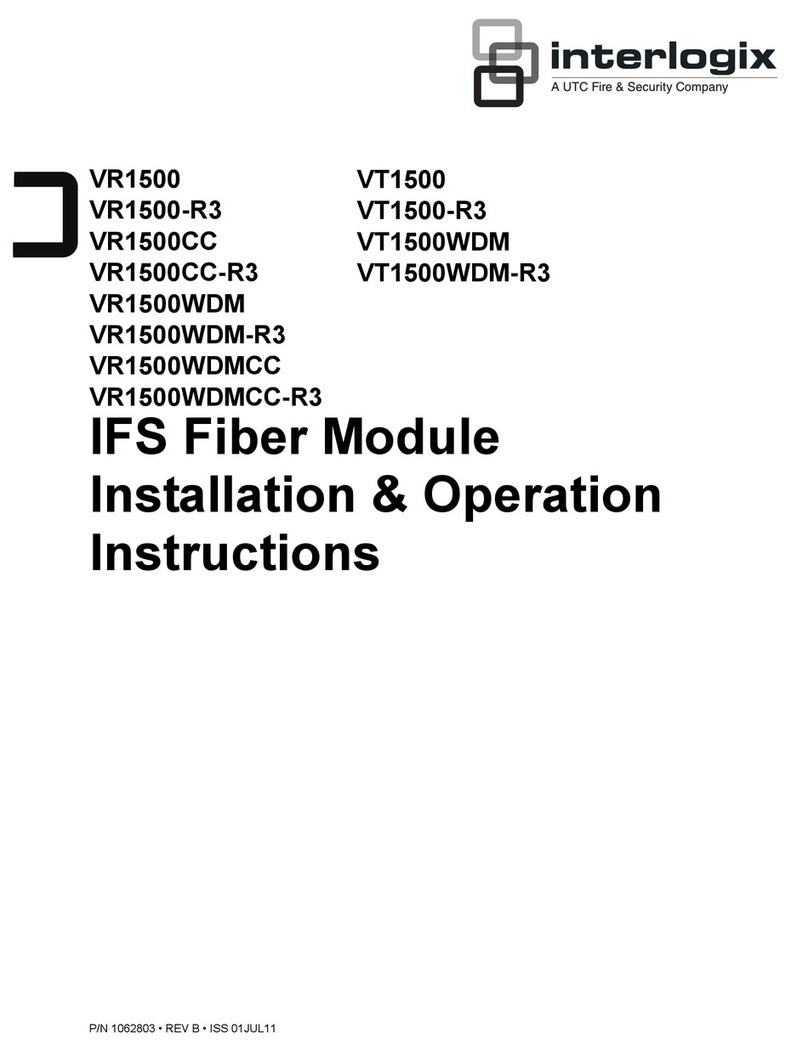
UTC Fire and Security
UTC Fire and Security interlogix VR1500 Installation & operation instructions



